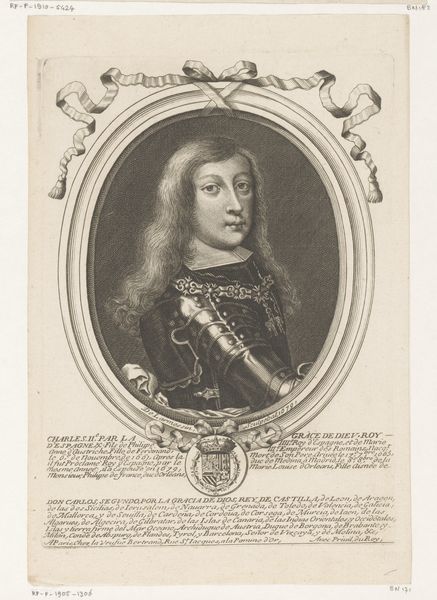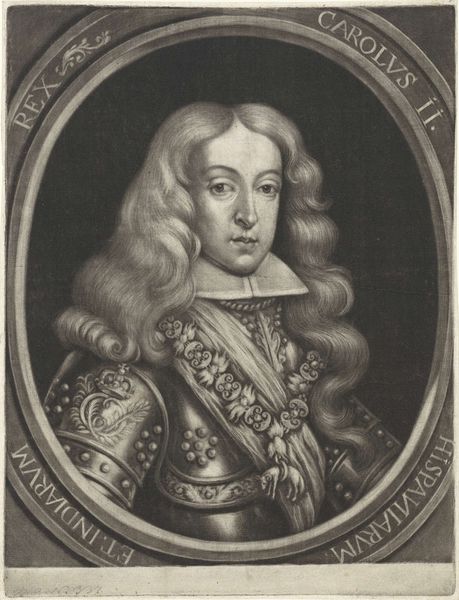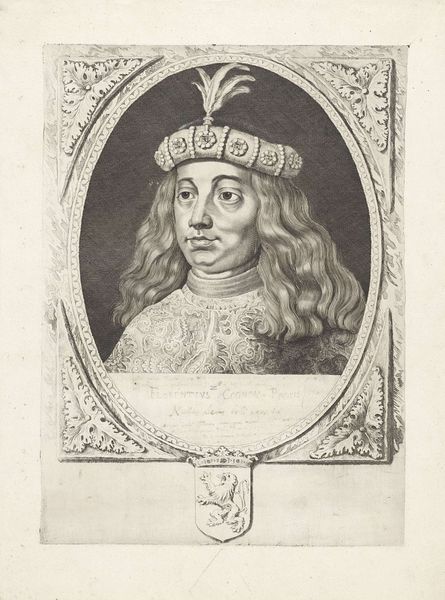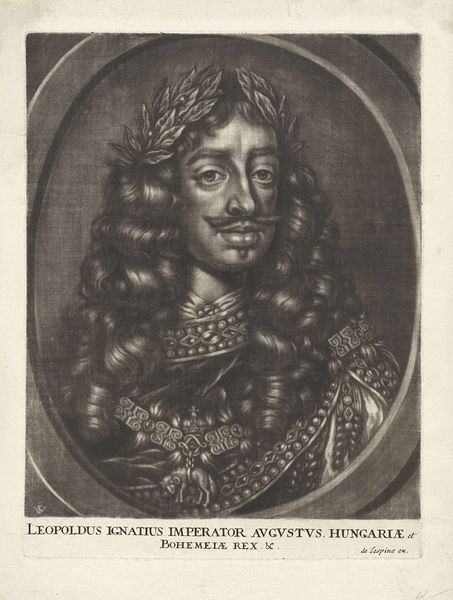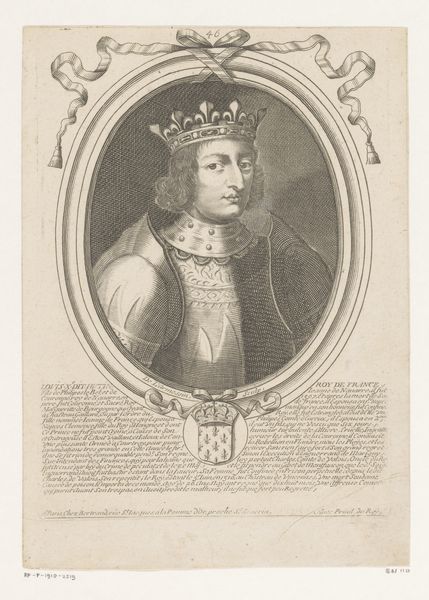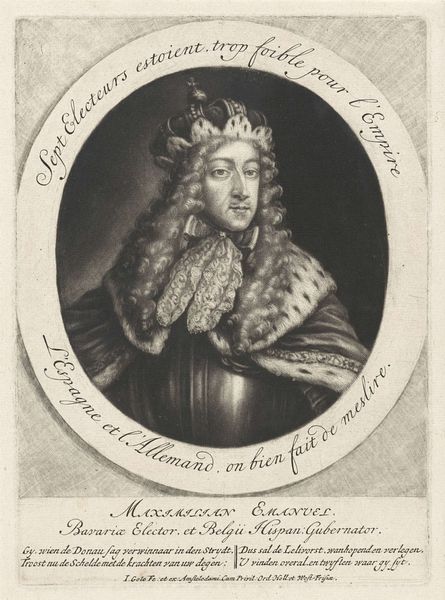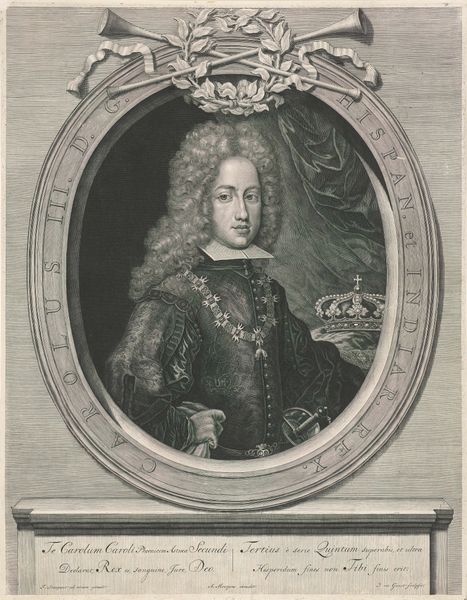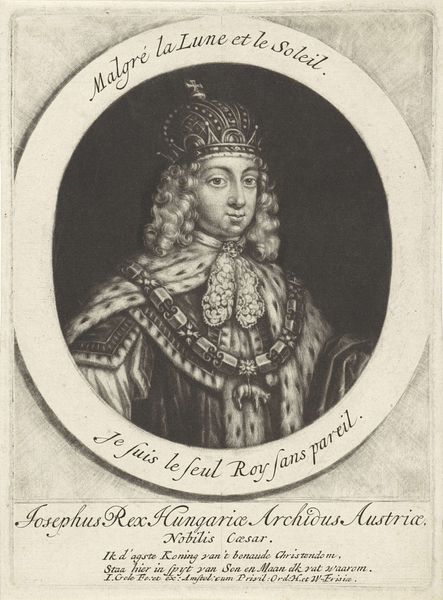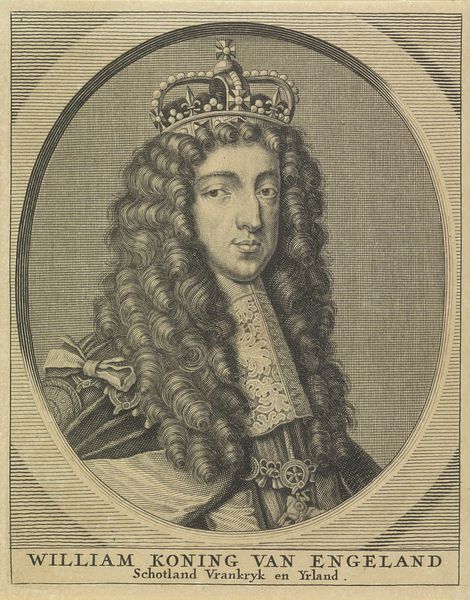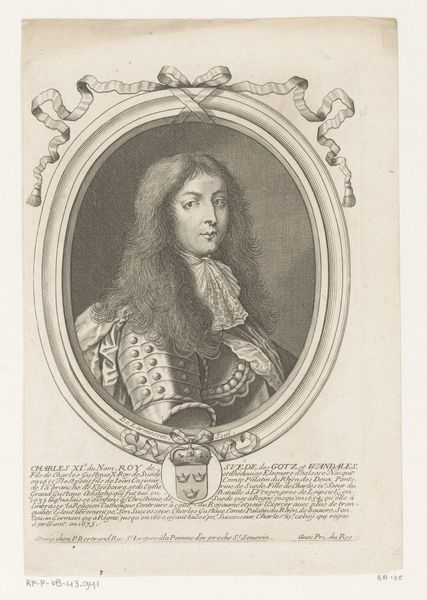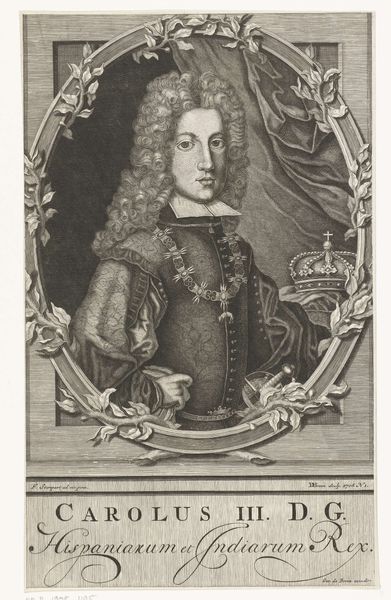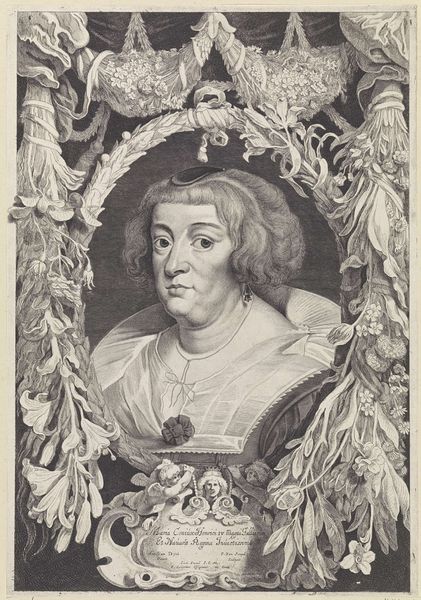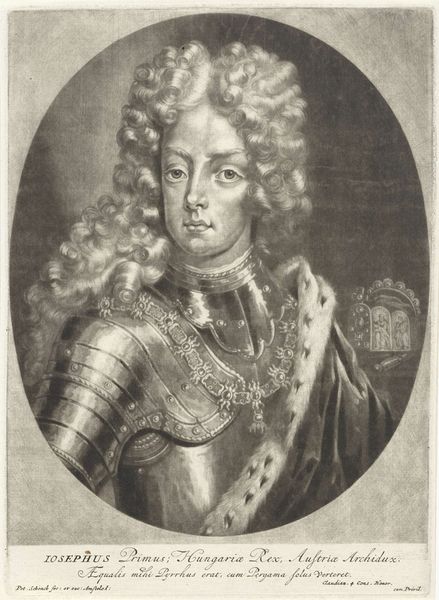
engraving
#
portrait
#
baroque
#
caricature
#
portrait drawing
#
history-painting
#
engraving
Dimensions: height 190 mm, width 141 mm
Copyright: Rijks Museum: Open Domain
Curator: The somber expression in this engraving immediately captures my attention; it is a depiction of Charles II, King of Spain, rendered by Matthijs van Marebeek sometime between 1670 and 1699. Editor: The craftsmanship is incredible. Just look at the texture achieved solely through etching, from the royal ermine to the intricate lace. The means to replicate and disseminate this image of power! Curator: Exactly. The formal language—the crown, the robe—speaks volumes. It's a careful construction, meant to evoke the concept of divine right, but I see frailty in his gaze. What symbolic function did prints like these serve, circulating so widely? Editor: As reproductions, they allowed wider audiences to view and judge the likeness of their ruler, creating political influence for engravers like Marebeek who controlled access and distribution. And that crown—imagine the sheer amount of labor and extraction required to create the original! This engraving advertises royal privilege and command. Curator: Yes, but what’s absent also speaks volumes. Consider the artist's rendering: we might view this now as almost caricature, a prescient warning about the future of the Habsburg line in Spain. He's the last Habsburg on the Spanish throne, remember, and this portrait captures a sense of waning power, almost anticipating historical destiny. Editor: Though, to be fair, his likeness reproduced via etching is now inextricably tied to the history, the narrative, and also our assumptions about the man, the artist, and the patrons who consumed these prints. The paper, the ink, the labor of etching itself. That is a language of its own. Curator: The Baroque era relished the artifice. Yet, for all its overt display of kingship, what lingers is a quiet disquiet. An artifact, yes, of material production, but also an invitation to contemplate Charles’ fate and perhaps, our own mortal projections onto rulers. Editor: Right. Looking at the quality, one could easily forget how widely these circulated, cheapening associations with their initial audience and perhaps signaling an early form of mass media critique of nobility itself. Thank you, this artwork reminds us that even printed portraiture involves immense material networks.
Comments
No comments
Be the first to comment and join the conversation on the ultimate creative platform.
